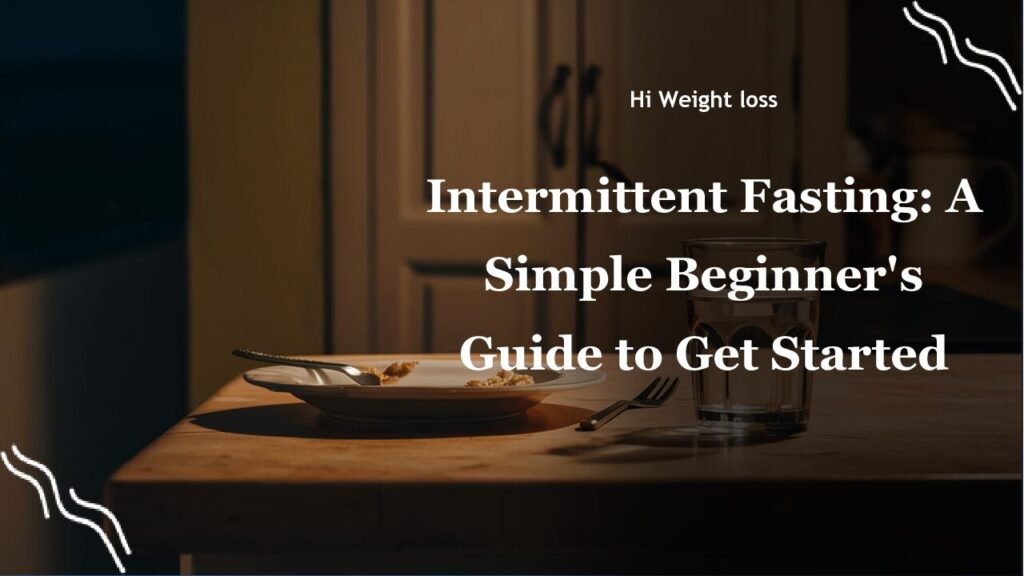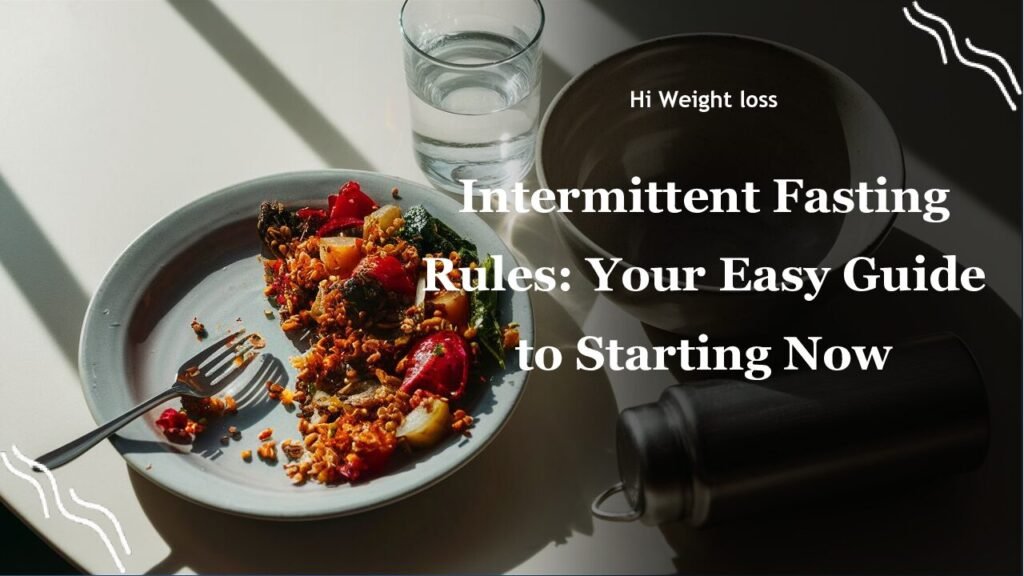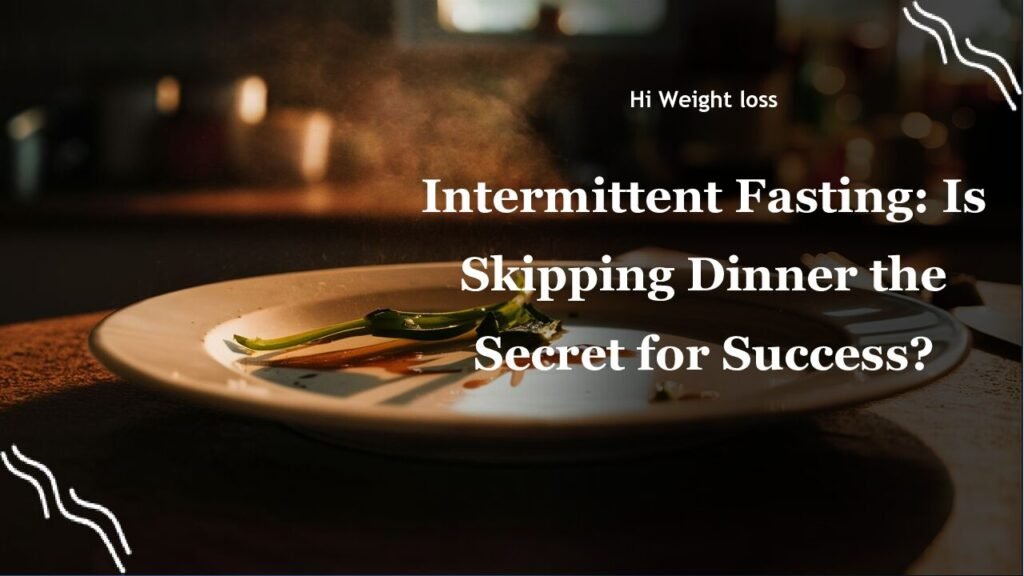Feeling overwhelmed by the idea of intermittent fasting? Many people find the concept daunting, imagining long hours of hunger and deprivation. I remember when my friend, Sarah, first started; she was so worried she’d be starving all day. Luckily, there’s a much gentler approach. This article will guide you through a beginner-friendly path to intermittent fasting, ensuring you feel supported every step of the way, and hopefully help you avoid some of the missteps Sarah took initially.
How Should a Beginner Start Intermittent Fasting?
Easing into Intermittent Fasting: The First Steps
When starting intermittent fasting, remember you’re not diving into the deep end of a pool. Instead, think of it as dipping your toes in the water first. My own foray into fasting began with a lot of research, and a little bit of fear! It turns out, the key is to begin with a flexible and manageable schedule, allowing your body to adjust gradually.
One of the most effective strategies is to start your fast after dinner. This makes it easier to adapt since a good chunk of your fasting time occurs while you’re sleeping. According to this Bulletproof article, this approach allows for a smoother transition, which I found to be absolutely true! Trying to fast all day, when I first started, was a recipe for hanger. Now let’s look at the different schedules you can choose from.
Choosing the Best Intermittent Fasting Schedule for Beginners
There isn’t a one-size-fits-all answer, but several popular schedules are particularly beneficial for beginners. The 16/8 method is common, where you fast for 16 hours and eat within an 8-hour window. However, if you are completely new, this might feel too difficult. Another option, and perhaps a better start, is the 14/10 method, which involves a shorter 14-hour fast and a longer 10-hour eating window. This guide from howtocuisine explains these methods very clearly.
For many people, including myself initially, the 14/10 method was much more manageable. Think of it like this: you have your dinner at 7 PM, and you can start eating again at 9 AM the next day. That’s it! It’s less about intense restriction and more about creating a routine that fits into your life. I found that making that small change, and extending that fasting window over time, really helped to give my body time to adapt.
Tips for Starting Intermittent Fasting Safely
Safety is paramount when you begin any new dietary practice. Always remember to start slow. As this blog from Plunge notes, don’t jump into the 16/8 method immediately if you’ve never fasted before. This can lead to feeling overly restricted and miserable. Gradual change is key!
It’s also essential to listen to your body. Pay close attention to how you feel during the fasting periods and don’t hesitate to adjust the fasting times as needed. If you’re extremely hungry or feel unwell, it’s okay to shorten your fast or even stop it for that day. Remember, this is about establishing a long-term habit, not about suffering. Mayo Clinic Health System offers great information on this.
Staying hydrated is critical throughout your fasting. Water, black coffee, or tea without any sweeteners or milk are great options. These drinks can help suppress hunger pangs and keep you hydrated without breaking your fast. Also, remember the power of a satiating meal. When it’s time to eat, focus on quality fats and protein to help manage your appetite and cravings. These are strategies that I found helped me and that other people have used as well. The goal is to feel full and satisfied, not deprived.

Strategies for Success
Many individuals find it helpful to plan their meals ahead of time. Having a solid idea of what you’ll eat during your eating window can make intermittent fasting much easier and prevent impulsive unhealthy choices. It’s also beneficial to establish a consistent fasting schedule. Consistency helps your body adjust and can lead to more predictable hunger patterns.
Another helpful strategy is keeping yourself busy during fasting periods, especially if you’re new to it. Reading a book, going for a walk, or doing some work can take your mind off food. This strategy really helped me out a lot initially and I still make use of it on occasion. Also, don’t be afraid to join online communities or find a friend to do it with! Support can be very motivating and can help you overcome challenges.
Intermittent Fasting: A Summary of Key Points
Here’s a handy table summarizing key points for beginner intermittent fasting:
| Tip | Description |
|---|---|
| Start After Dinner | Begin your fast after dinner to align with your sleep schedule. |
| Choose a Schedule | Opt for 14/10 or 16/8; start with 14/10 for an easier transition. |
| Start Slow | Don’t be too aggressive; start with easier routines and gradually increase fast times. |
| Listen to Your Body | Adjust the plan according to your body’s feedback. |
| Stay Hydrated | Drink water, black coffee, or tea during fasting periods. |
| Eat Satiating Meals | Focus on quality fats and protein to help manage your hunger. |
Conclusion
Starting intermittent fasting can be a transformative experience, but it’s crucial to approach it with a beginner-friendly mindset. Begin your fast after dinner, select a schedule like the 14/10 method, and adjust as needed. Stay hydrated and eat well when it’s time to eat. Remember my friend Sarah? She started by setting up a 14/10 fasting schedule, then extended that period over time, and she is now loving her experience! She learned to start slowly, and to listen to her body, which were the main lessons she took away from her initial experience. She also found having a friend join her made it much easier. Remember, you are embarking on a new health journey, so be patient with yourself, and adjust things as you go along. If you follow these guidelines, you will not only be on the road to success but also find out that intermittent fasting is a realistic and manageable health strategy.
Now that you have the information, why not give it a try? Start with a 14/10 schedule this week, and see how you feel. Don’t forget to share your experience and learnings with your friends, and don’t forget to share this article!
FAQ
Can I drink anything during fasting periods?
Yes, you can drink water, black coffee, or unsweetened tea. Avoid drinks with calories, milk, or sweeteners.
What should I do if I feel too hungry during a fast?
If you’re feeling overwhelmingly hungry, adjust your fasting window and consider shortening it. Don’t hesitate to eat when your body signals it’s in need, especially when you’re just starting.
Is the 16/8 method too hard for beginners?
The 16/8 method may be too intense for someone completely new to intermittent fasting. Starting with the 14/10 method is a better approach for most people, allowing you to gradually adjust.
How long should I wait before moving to a more intense schedule?
Once you feel comfortable with the 14/10 method, you can gradually increase your fasting window. For example, you can extend it to 15/9 and eventually 16/8. Listen to your body and make the changes as you feel comfortable and ready to do so.



